Do you have a trouble to find 'how do you write a repeating decimal as a fraction'? Here you can find questions and answers on the topic.
Repetition Decimal to FractionFor another example, change repeating decimal 0. 333 to A fraction.Create the ordinal equation with cardinal equal to the repeating decimal number: x = 0. 333There are 3 repeating decimals. Make over the second par by multiplying some sides of (1) by 10 3 = 1000: 1000X = 333. 333 (2)Subtract equation (1) from (2) to get 999x = 333 and clear for xx = 333/999Reducing the divide we get 10 = 1/3Answer: 10 = 0. 333 = 1/3
Table of contents
- How do you write a repeating decimal as a fraction in 2021
- Repeating decimal to fraction calculator
- How to write a repeating decimal
- Converting repeating decimals to fractions khan academy
- Repeating as a fraction
- Repeating decimal to fraction worksheet
- Decimal to fraction converter
- Repeating decimal examples
How do you write a repeating decimal as a fraction in 2021
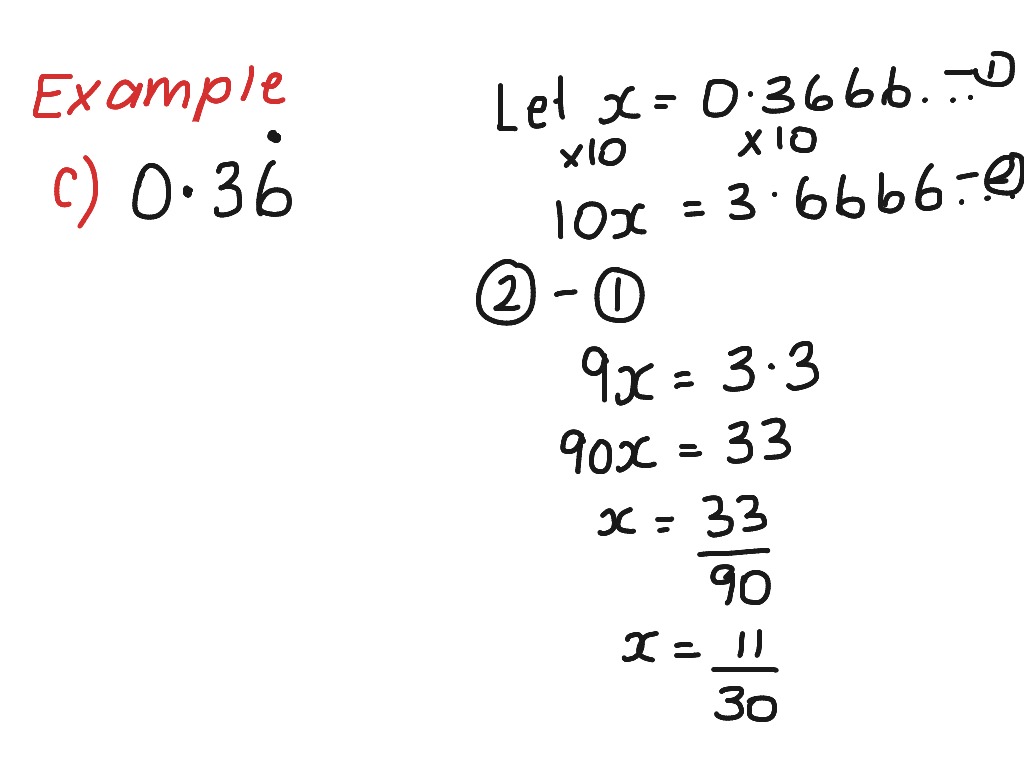 This image shows how do you write a repeating decimal as a fraction.
This image shows how do you write a repeating decimal as a fraction.
Repeating decimal to fraction calculator
 This image demonstrates Repeating decimal to fraction calculator.
This image demonstrates Repeating decimal to fraction calculator.
How to write a repeating decimal
 This image shows How to write a repeating decimal.
This image shows How to write a repeating decimal.
Converting repeating decimals to fractions khan academy
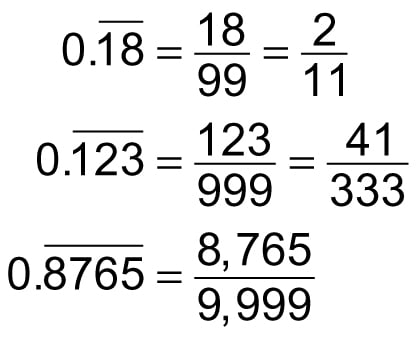 This image representes Converting repeating decimals to fractions khan academy.
This image representes Converting repeating decimals to fractions khan academy.
Repeating as a fraction
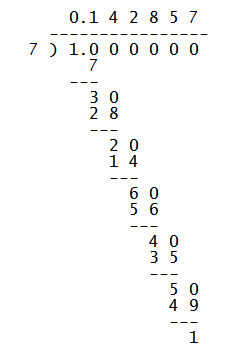 This picture illustrates Repeating as a fraction.
This picture illustrates Repeating as a fraction.
Repeating decimal to fraction worksheet
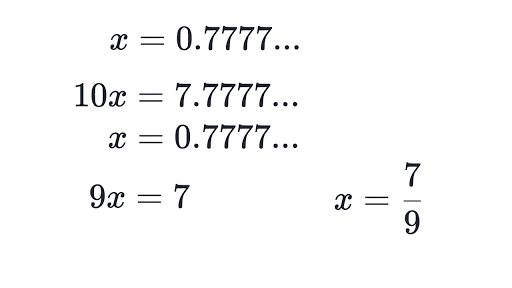 This picture shows Repeating decimal to fraction worksheet.
This picture shows Repeating decimal to fraction worksheet.
Decimal to fraction converter
 This image illustrates Decimal to fraction converter.
This image illustrates Decimal to fraction converter.
Repeating decimal examples
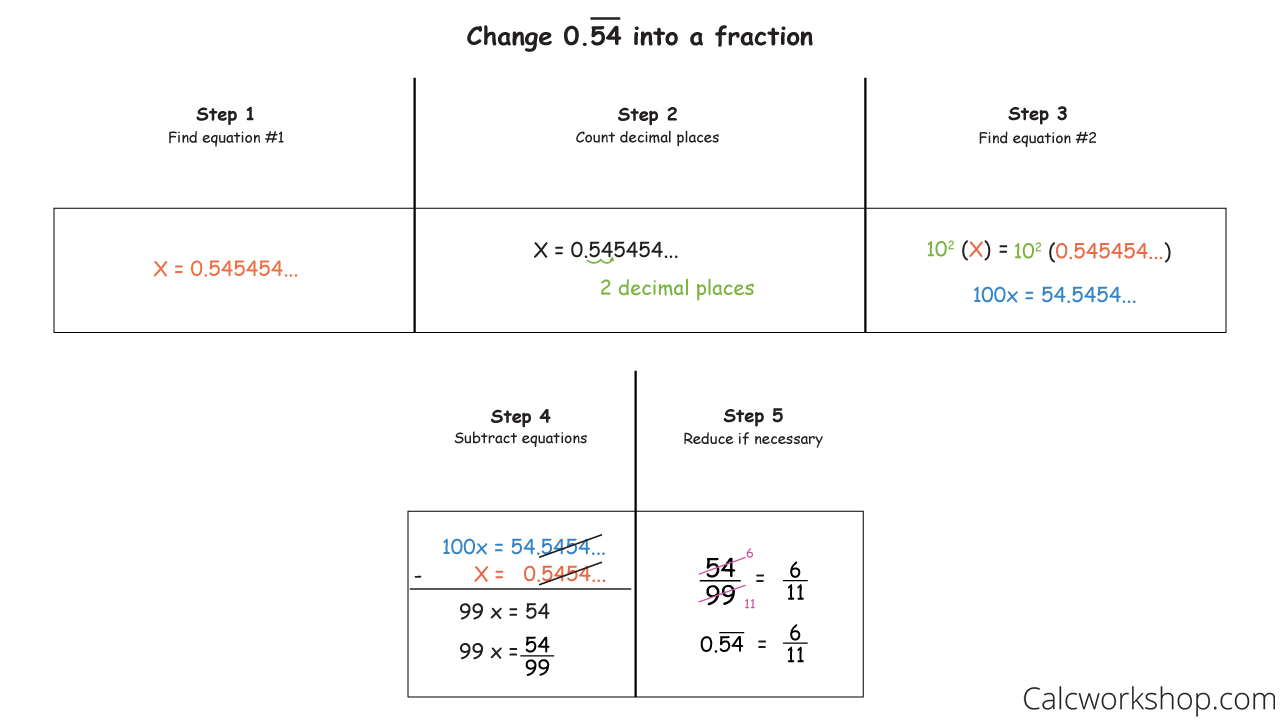 This image shows Repeating decimal examples.
This image shows Repeating decimal examples.
Which is the simplest form of a repeating decimal?
Therefore, x = 4/9, and the repeating decimal 0.4444 can be written as the fraction 4/9. Reduce the fraction. Put the fraction in its simplest form (if applicable) by dividing both the numerator and denominator by the greatest common factor. In the example of 4/9, that is the simplest form.
How to convert a repeating decimal to a fraction?
The formula to convert this type of repeating decimal to a fraction is given by: Convert 0.\overline {7} to the fractional form. Here, the number of repeated term is 7 only. Thus the number of times 9 to be repeated in the denominator is only once. Convert 0.125125125… to the fractional form.
How do you convert a fraction to a recurring number?
To convert a fraction to a recurring decimal, we can find an equivalent fraction that only contains 9 9 ‘s on the denominator. The numerator then gives us the recurring (repeating) part of the decimal, in which we put a dot above the first number and the last number.
How do you remove the repeating decimal from an equation?
Since there’s only one digit in the repeating decimal, multiply the equation by 10^1 (which equals 10). In the example where x = 0.4444, then 10x = 4.4444. With the example x = 0.4545, there are two repeating digits, so you multiply both sides of the equation by 10^2 (which equals 100), giving you 100x = 45.4545. Remove the repeating decimal.
Last Update: Oct 2021